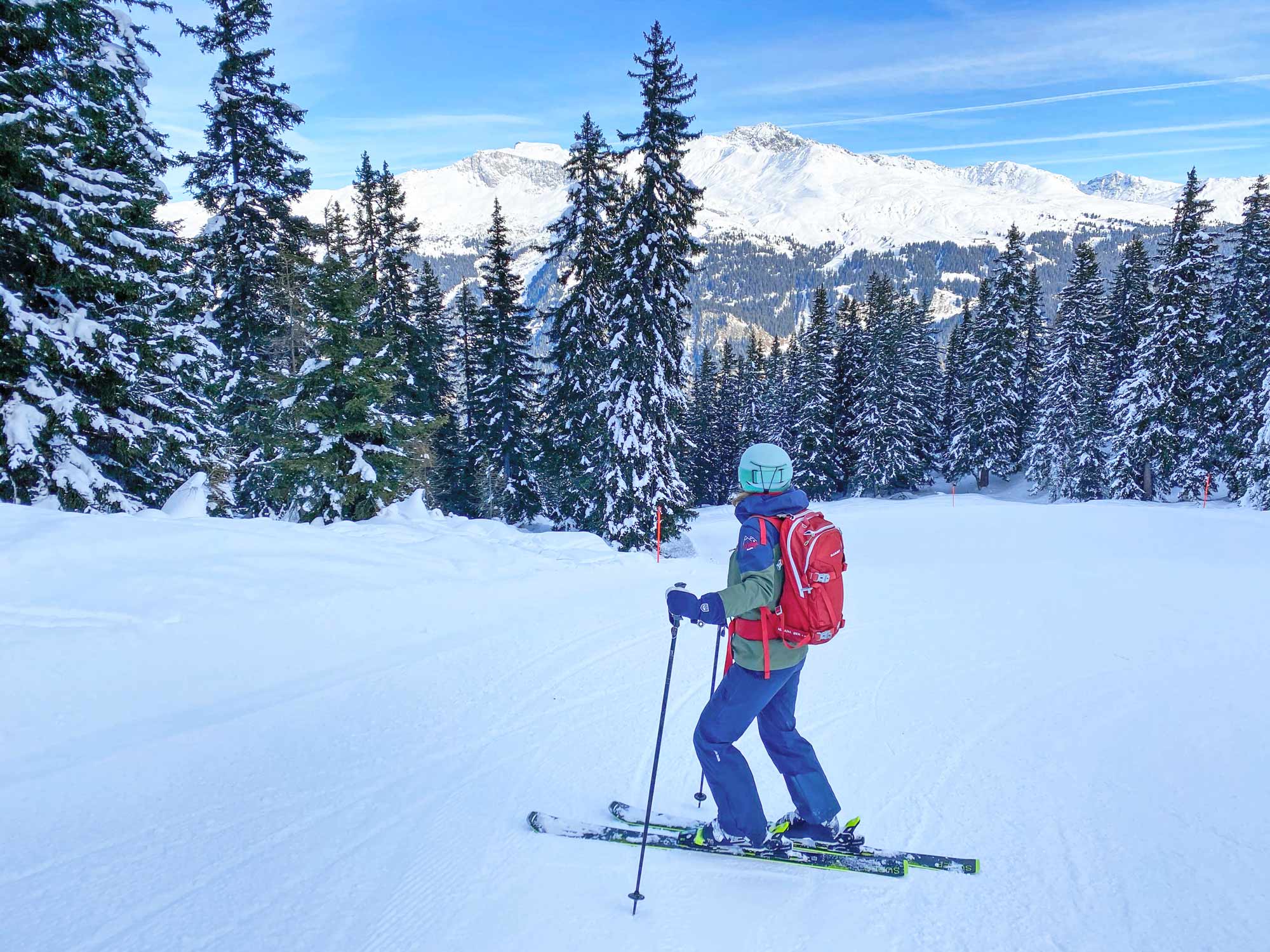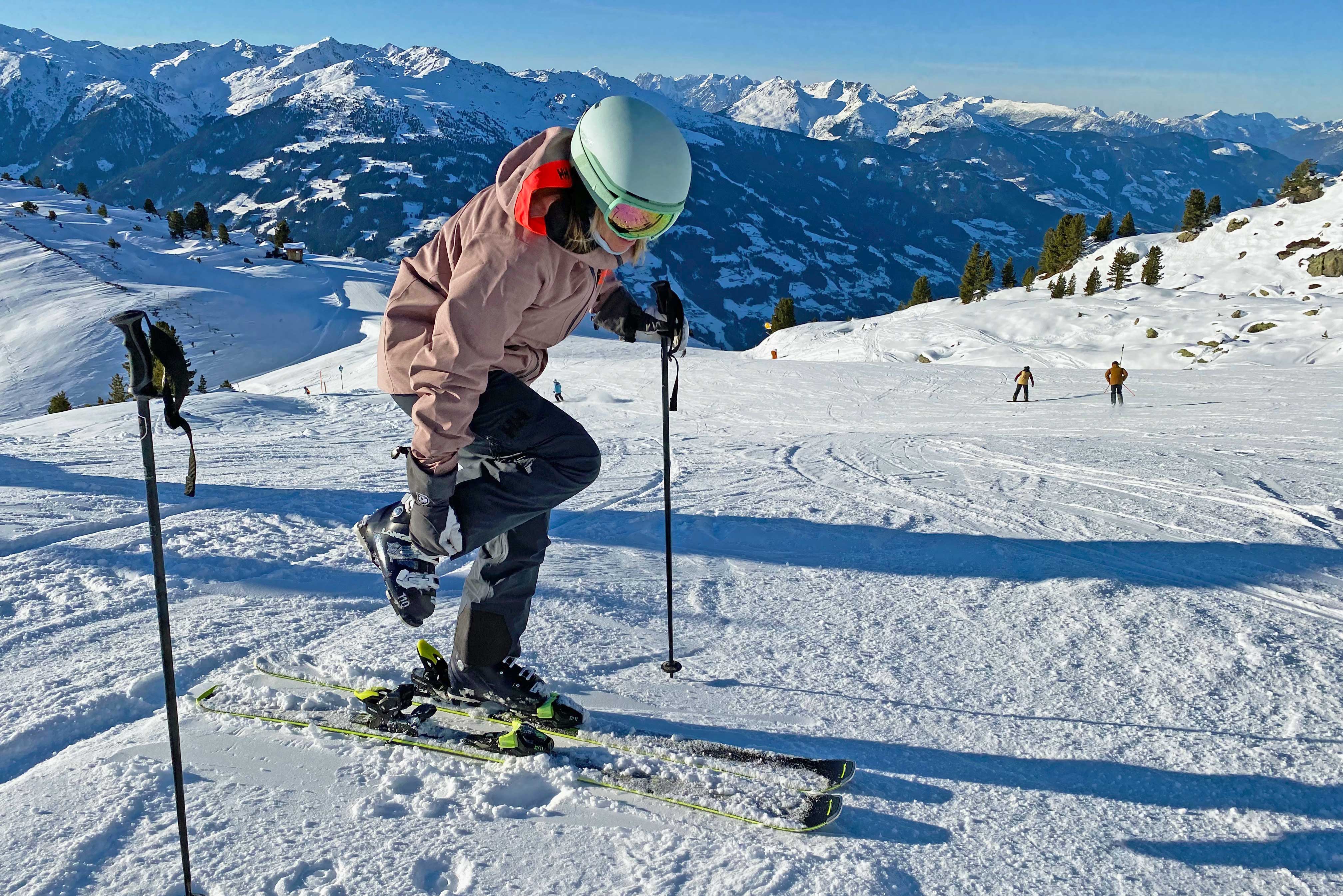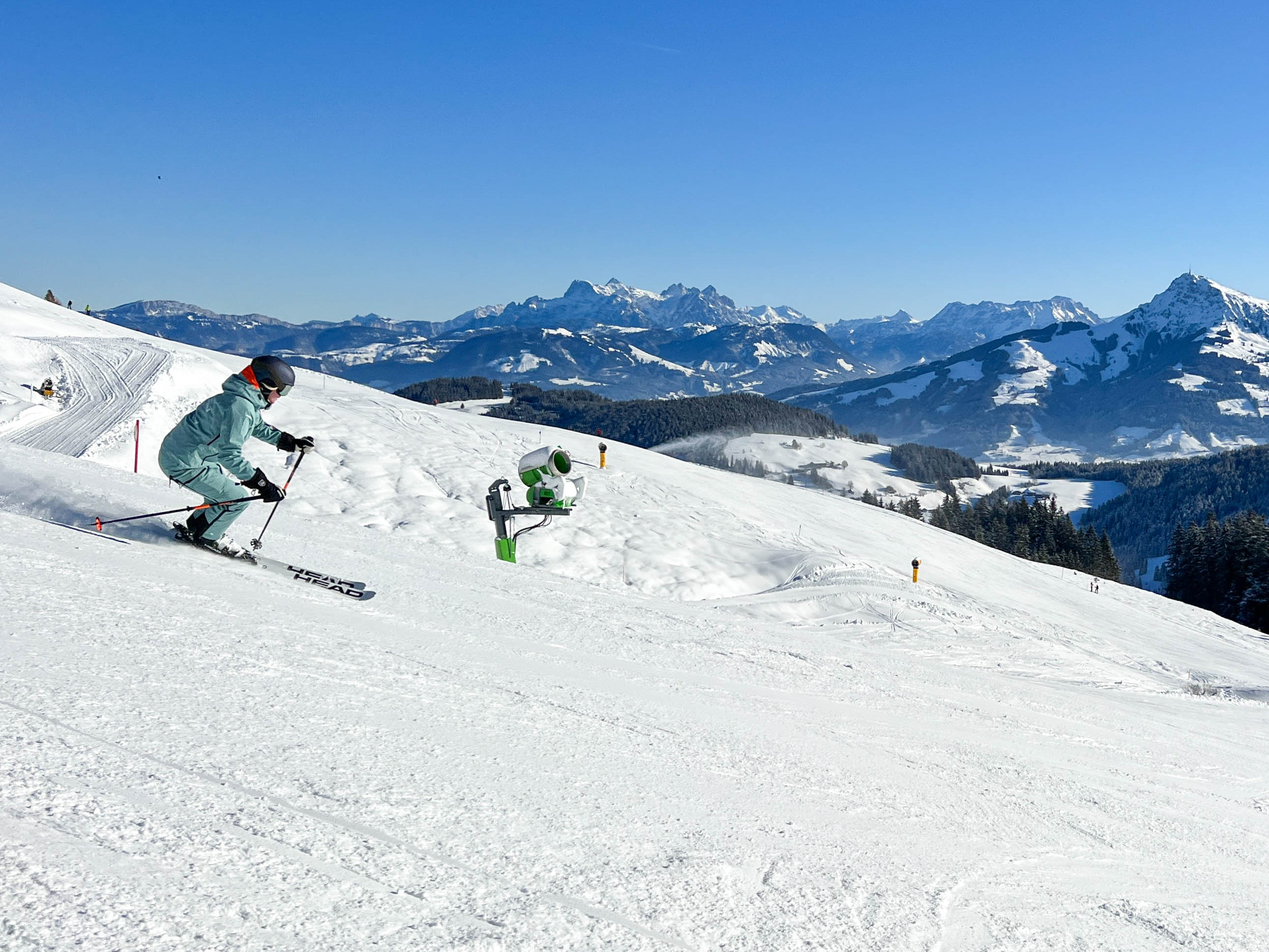

Ah, that fresh powder snow! Golly, those views! Is that a bird landing on your ski pole? Skiing off-piste is a completely different experience from sticking to the groomed slopes. If you're a confident skier with a few years of carving under your belt, you might be dreaming of taking it to the next step and finding a patch of virgin snow where you can carve out fresh tracks. But it's said that even the best on piste skier will feel like a complete beginner again once he or she is up to his or her waist in fresh powder! Want to feel at one with the mountains, miles away from the crowds? If you're thinking about venturing off-piste during your next ski holiday, there are a few things you should know first. In this article we've laid out some advice and techniques for skiing off piste. Ready to challenge yourself? Let's go!
Before getting started
Off-piste skiing refers to anything that's not on a groomed piste. While most people immediately assume they'll be skiing through waist-high powder, this isn't always the case. So off-piste skiing technique really means a well-rounded ability to tackle any type of terrain Mother Nature throws at you. Remember, if you're planning on skiing off-piste in a non-secured area, as is the case with most ski resorts in the Alps, it's essential to be equipped with avalanche safety equipment including an avalanche transceiver, probe, and shovel and have the proper avalanche preparedness knowledge. Be aware that skiing off-piste is not usually covered by your travel insurance policy, even if you've taken out winter sports coverage. This is often true even if you've just veered off right beside the marked ski slope.

Relax but concentrate
Off-piste skiing is all about anticipating what you're likely to come across on a given slope, while being ready for anything else the terrain might throw at you. You never know if that fresh powder field is hiding a running stream underneath, or if the hard-packed snow is actually sitting on top of a very unstable base layer and is about to cause an avalanche. Don’t expect to get the hang of things straight away and admit when you’ve had enough! If you force your body to make the required extra effort for too long, you could end up hurting yourself quite seriously. Moreover, if you’re tense and feel out of your comfort zone, you will have very little chance of becoming a good or happy off piste skier. Take it step-by-step and advance to more difficult terrain only as you feel ready. You’ll know you’ve got it when suddenly you feel like you’re skiing in slow motion and you’re no longer making any effort at all… This is when the fun really starts!
Essential off-piste skiing techniques
While it would take years to get to the point where you can do all the crazy feats you see in ski films, there are two or three staple techniques that are essential for anyone wanting to explore off-piste skiing. Help prepare yourself for unpredictable terrain by practising these techniques on steep in-bounds slopes before venturing into the backcountry. Of course, advice for skiing off-piste could fill entire books, because of the variable terrain. If you find yourself on a fairly flat powder field, then you can ditch the short turns and embrace backseating, because it might be the only way you can pick up the speed you need not to land face-first in powder!
Stance
You'll usually take a slightly wider stance on an ungroomed piste, as this gives you more stability. You're on unreliable terrain and you never know what the mountain is going to throw at you, whether a tree or a rock or a tiny cliff. So it's important to lean into your skis, keep your weight on both skis and stay flexible enough to dodge any obstacles that come up. To help you keep control of your skis, concentrate on keeping your weight centred in the middle of each ski. This is when you will really appreciate how modern ski boots have vastly improved the amount of power we can transfer from our legs down into our skis. Beware of
backseating, which will kill your thigh muscles and make it more difficult to control your skis.
Pole plants
Skiing off-piste usually means skiing steeps, so one of the first things you should master is how to use your poles to control your speed. Practise holding your arms out in front of you,
planting your poles
just downhill from you and turning around them, using them as a fulcrum. Aside from helping your stance, planting your poles properly will also help you keep a steady rhythm. If you've ever watched professional mogul skiers training in the off-season by hopping from side to side, you'll know what we mean.
Turns
Another feature regular to backcountry terrain is narrow areas, such as gullies, chutes, couloirs or gladed areas, where you won't have the liberty of making wide turns. Before tackling this kind of terrain, you'll have to master the art of tight turns. There are two main kinds: hop turns and kick turns. Hop turns literally do mean hopping off the ground as you turn. To pull off a hop turn, crouch low and then spring into the turn, crouching into the turn again as you land to safely absorb the pressure without hurting your knees. A kick turn is even easier, although it sounds intimidating, and kick turns are an extremely effective way of giving yourself the chance to enter a steep bit from another angle. Start by standing still, with your skis perpendicular to the slope's fall line. Put your downhill pole behind your top ski, so both your poles are uphill from you. Then, one at a time starting with the downhill ski, "kick" your skis up until they're both facing the other way from what they were originally. Your original downhill ski will now be your uphill one, and you're free to
Speed
Most off-piste skiers won't reach the crazy speeds that professional ski racers reach, say, on the Mousetrap section of the
Hahnenkamm Races. But you shouldn't be afraid of taking a slope which is steeper than you would normally choose – the deep snow slows you down so you do need to get some speed up to start to enjoy the trampoline effect of regular turns. Oh, and one more thing - don't be afraid to throw your whole body into each turn. If you wimp out halfway through, you might send yourself skittering down a steep slope with your skis pointed straight downwards. Trust your skis!
Becoming a pro off-piste skier
It takes years to master off-piste skiing, and as you've seen, it's impossible to prepare for every single situation. But prepare these basic techniques and you'll be well on your way to coping with a wide range of backcountry terrain. Enjoy! Maybe we’ll cross tracks this winter…














